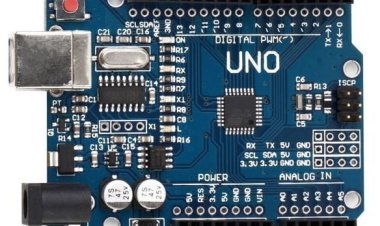Combustion synthesis of B4C-TiB2 nanocomposite powder: Effect of Mg particle size on SHS and optimization of acid leaching process
Combustion synthesis of B4C-TiB2 nanocomposite powder: Effect of Mg particle size on SHS and optimization of acid leaching process Çoban, Ozan; Buğdaycı, Mehmet; Başlayıcı, Serkan; Açma, Mahmut Ercan In this study, composite nanoparticles of B4C-TiB2 were produced by combustion synthesis. Production was carried out by self-propagating high-temperature synthesis (SHS) method in atmospheric conditions by using oxide raw materials (B2O3, TiO2), carbon black and magnesium as a reducing agent. The effect of Mg particle size on SHS efficiency was investigated. Single-stage and 2-stage leaching processes were carried out to remove undesired phases in the SHS product. In the 1st HCl acid leaching process, the leaching temperature and leaching duration were optimized. As a result of the 2nd leaching process with the addition of carbonic acid and H2O2, commercial quality nanoparticle synthesis was performed. Results revealed that the increase in Mg particle size decreased the SHS efficiency, however very fine particle sized Mg usage decreased the SHS efficiency due to the evaporation and scatter of Mg. The optimum Mg particle size was determined as 75-150 mu m. Since it has a significant effect on the removal of Mg-borate phases, 90 degrees C was determined as the optimum leaching temperature. The optimum leaching duration was determined to be 60 min. As a result of optimized leaching processes, 99.11% purity B4C-TiB2 nanoparticle with 193.5 nm particle size and 30.65 m(2)/g surface area was synthesized.

Combustion synthesis of B4C-TiB2 nanocomposite powder: Effect of Mg particle size on SHS and optimization of acid leaching process Çoban, Ozan; Buğdaycı, Mehmet; Başlayıcı, Serkan; Açma, Mahmut Ercan In this study, composite nanoparticles of B4C-TiB2 were produced by combustion synthesis. Production was carried out by self-propagating high-temperature synthesis (SHS) method in atmospheric conditions by using oxide raw materials (B2O3, TiO2), carbon black and magnesium as a reducing agent. The effect of Mg particle size on SHS efficiency was investigated. Single-stage and 2-stage leaching processes were carried out to remove undesired phases in the SHS product. In the 1st HCl acid leaching process, the leaching temperature and leaching duration were optimized. As a result of the 2nd leaching process with the addition of carbonic acid and H2O2, commercial quality nanoparticle synthesis was performed. Results revealed that the increase in Mg particle size decreased the SHS efficiency, however very fine particle sized Mg usage decreased the SHS efficiency due to the evaporation and scatter of Mg. The optimum Mg particle size was determined as 75-150 mu m. Since it has a significant effect on the removal of Mg-borate phases, 90 degrees C was determined as the optimum leaching temperature. The optimum leaching duration was determined to be 60 min. As a result of optimized leaching processes, 99.11% purity B4C-TiB2 nanoparticle with 193.5 nm particle size and 30.65 m(2)/g surface area was synthesized.

 Bilgi
Bilgi 














